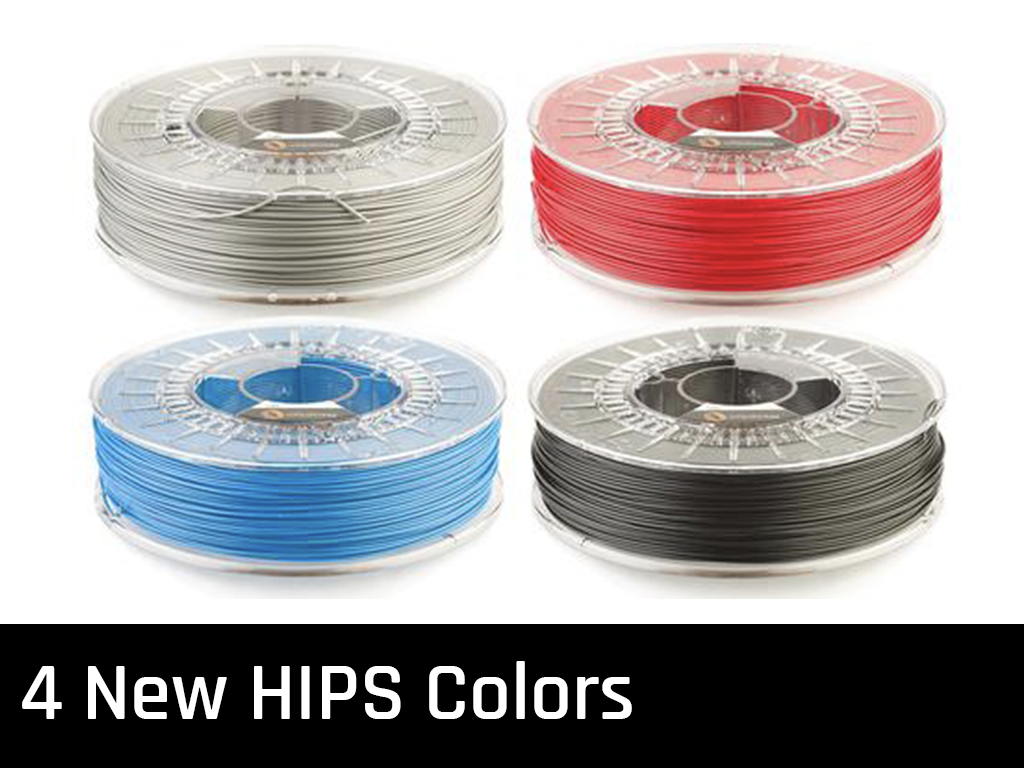High-performance material not only suitable for supports but also great for functional objects.

| Working temperature: | 230–250 °C |
| Heated bed: | 90–105 °C |
| Available diameters: | 1.75 mm and 2.85 mm |
| Diameter tolerance: | +/- 0.05 mm |
| Weight: | 750 g of filament (+ 230 g spool) |
| The length of the filament: |
328 m (1.75 mm, 750 g)
120 m (2.85 mm, 750 g) |
Features:
| HIPS | Nylon FX256 | ||
| Tensile modulus | 2000 MPa | 1400 MPa | |
| Dielectric strength | 155 kV/mm | 27 kV/mm | |
| Notched impact resistance | 17 kJ/m2 | 7 kJ/m2 | |
| Heat resistance (HDT) | 85 °C (1.8 MPa) | 50 °C (1.8 MPa) | |
A calibration tray printed in HIPS was implemented in the production process of our filaments. “Production of filaments needs a fine adjustment of the water flow being on the same level in all axes,” explains Jan Daněk, a production technologist in Fillamentum
| Cookie | Description |
|---|---|
| _dc_gtm_UA-189275971-1 | The functionality is to store number of service requests. |
| _ga | This cookie is installed by Google Analytics. The cookie is used to calculate visitor, session, campaign data and keep track of site usage for the site's analytics report. The cookies store information anonymously and assigns a randomly generated number to identify unique visitors. |
| _ga_L703XWXLV0 | This cookie is installed by Google Analytics. |
| _gat_gtag_UA_189275971_1 | Set by Google to distinguish users. |
| _gid | Installed by Google Analytics, _gid cookie stores information on how visitors use a website, while also creating an analytics report of the website's performance. Some of the data that are collected include the number of visitors, their source, and the pages they visit anonymously. |
| CONSENT | YouTube sets this cookie via embedded youtube-videos and registers anonymous statistical data. |
| Cookie | Duration | Description |
|---|---|---|
| VISITOR_INFO1_LIVE | 5 months 27 days | A cookie set by YouTube to measure bandwidth that determines whether the user gets the new or old player interface. |
| YSC | session | YSC cookie is set by Youtube and is used to track the views of embedded videos on Youtube pages. |
| yt-remote-connected-devices | never | YouTube sets this cookie to store the video preferences of the user using embedded YouTube video. |
| yt-remote-device-id | never | YouTube sets this cookie to store the video preferences of the user using embedded YouTube video. |
| yt.innertube::nextId | never | This cookie, set by YouTube, registers a unique ID to store data on what videos from YouTube the user has seen. |
| yt.innertube::requests | never | This cookie, set by YouTube, registers a unique ID to store data on what videos from YouTube the user has seen. |